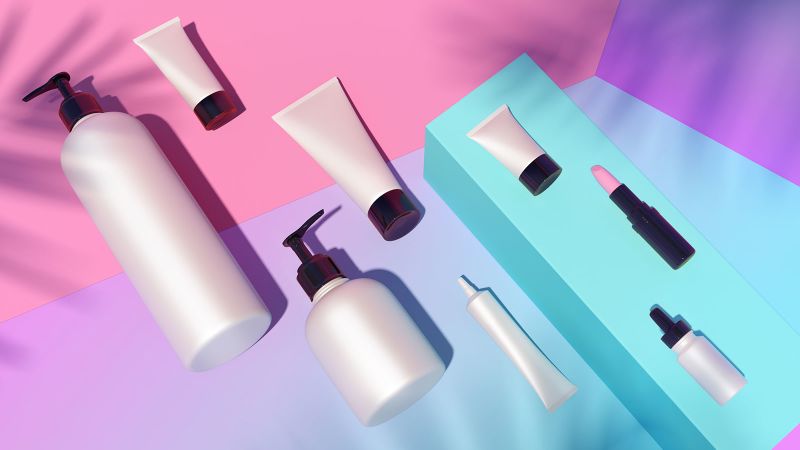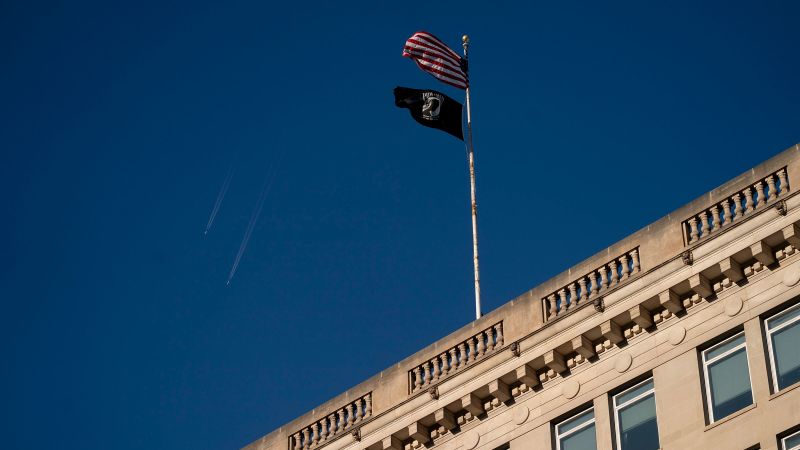Copyright Cable News Network

In an episode of “The Pitt,” a hospital drama on HBO Max, a young TikTok beauty influencer named Nandi is found roaming the streets of New York, walking dangerously into traffic while screaming at cars and people. (HBO Max is owned by CNN’s parent company, Warner Bros. Discovery.) Nandi is experiencing severe insomnia, tremors and psychosis, and her quickly deteriorating condition bewilders the emergency room staff. Finally, an enterprising resident finds she has mercury poisoning from an unusual source — an imported facial moisturizer she promotes in her videos. In the spirit of art imitating life, the episode calls attention to the proliferation of potentially toxic chemicals in the products many of us slather daily on our face, body and hair. According to a 2021 analysis of 231 cosmetics purchased in the United States and Canada, 52% contain chemicals called PFAS, or per- and polyfluoroalkyl compounds — known hormone disruptors that have been linked to numerous health concerns. Some of the highest levels were found in foundations (63%), waterproof mascara (82%) and long-lasting lipstick (62%). The report also found 88% of products with PFAS failed to disclose their presence on the label, leaving consumers with no way to protect themselves. Beauty products marketed to Black women have long been known to contain hazardous ingredients. For example, some 50% of hair straighteners contain toxic chemicals such as formaldehyde, which is linked to cancer. Yet there is a bit of light on the horizon — at least in the United States — according to the 2025 Beauty & Personal Care Ingredient Intelligence Report compiled by ChemFORWARD, a nonprofit dedicated to analyzing industry hazard data to encourage manufacturers to use safer chemicals in their personal care products. “Verified safety is on the rise, with chemicals of concern appearing in fewer products and down 2% overall,” said Stacy Glass, cofounder and executive director of ChemFORWARD. “This shows that it’s possible to identify and manage toxic chemical exposure in personal care products with industry cooperation.” However, the ChemFORWARD report also found nearly 4% of the products continue to frequently use a “small but critical group of high hazard chemicals,” especially in lip colors, moisturizers, concealers, shampoos and conditioners. While that percentage appears small, it’s important to remember the 50,000 products ChemFORWARD analyzed is a tiny fraction of the global personal care industry, said David Andrews, acting chief science officer for the Environmental Working Group or EWG, a consumer health nonprofit that provides its own database of toxicity information on specific products from over 6,000 brands. “Even when companies do formulate to remove hazardous chemicals, those chemicals may not be removed from the entire market,” Andrews said. “That leaves consumers vulnerable — which products do they avoid when they’re going to the store?” Unknown dangers still exist ChemFORWARD analyzed the ingredient lists of nearly 50,000 products provided by its industry partners, which include Dow, Counter, Credo Beauty, Inolex, Sephora, The Honest Company and Ulta Beauty. All are part of the Know Better, Do Better (KBDB) Collaborative. More than 71% of the 1.25 million ingredients analyzed for the report were found to be safe or low concern for both human health and the environment. Such ingredients include glycerin and hyaluronic acid, which help skin retain moisture. Other examples include iron oxides — which add color to makeup and are sun- and blue light-protective — and tocopheryl acetate, a synthetic form of vitamin E that protects skin from free radicals. However, everyone is different, so allergic reactions or skin sensitivity may still occur in some people, Glass said. Over 24% of the chemicals in the analysis, however, could not be assessed due to a lack of evidence on their safety profile, “representing a major blind spot in consumer safety and brand risk,” according to the report. “Just as a ‘fat free’ snack can be loaded with unhealthy levels of salt and sugars, so can a ‘free of’ cosmetic be loaded with chemicals for which there is no evidence of safety,” the report said. Botanicals are a good example of where it can be difficult to determine toxicity, said Heather McKenney, science and safer chemistry lead for ChemFORWARD. “There’s the assumption that they’re safe, but they’re very difficult to characterize — the root versus the leaf versus the stem and how it was grown and processed — to have sufficient data to understand whether or not it is a potential carcinogen, mutagen or reproductive toxicant,” McKenney said. Read labels carefully for these chemicals Industry is constantly adding new chemicals so there will always be ingredients that need to be examined for potential toxicity, McKenney said. “The consumer should not have to be responsible for this decision,” she said. “It should be up to the manufacturers that are making these products, and we need to get more of the industry on board. Any brand that acknowledges that they’ve got work to do, is in my mind, on the opposite side of greenwashing.” Consumers can check labels for the most frequently used chemicals given D and F hazard ratings in the ChemFORWARD report. Often added to skin and hair products to create a silky, nongreasy feel, F-rated silicones cyclopentasiloxane and cyclomethicone were the most prevalent toxic ingredient in all of the products, according to the report. The European Union has limited the use of both chemicals in wash-off cosmetics due to concerns over harm to aquatic animals. Another F-rated ingredient to watch for on labels is methylparaben — early research finds parabens mimic estrogen and may disrupt the body’s hormonal or endocrine system, according to the report. Methylparaben is used in makeup, moisturizers, shampoos, sunscreens and other products to inhibit mold. D&C Red 27, 28 or Acid Red 92, which received D ratings, are thought to disrupt the reproductive, hormonal and immune system and may accumulate in both humans and wildlife, according to the analysis. The dyes are often used in long-lasting lip stains. Butylated hydroxytoluene, or BHT, another D-rated ingredient in the analysis, is easily absorbed by the skin and thought to be an endocrine disruptor as well as toxic to aquatic life. It’s a preservative used in many products — lotions, creams, deodorants, fragrances, lipsticks, eyeliners and eye shadows, to name a few. The good news is that there are safer substitutes that can be used by the industry as more manufacturers move to reduce toxins, Glass said. “We feel very emboldened in beauty and personal care that there’s a lot that can be accomplished with strategic substitution,” she said. “We believe our report shows the transition to safer chemistry is actively underway.”



